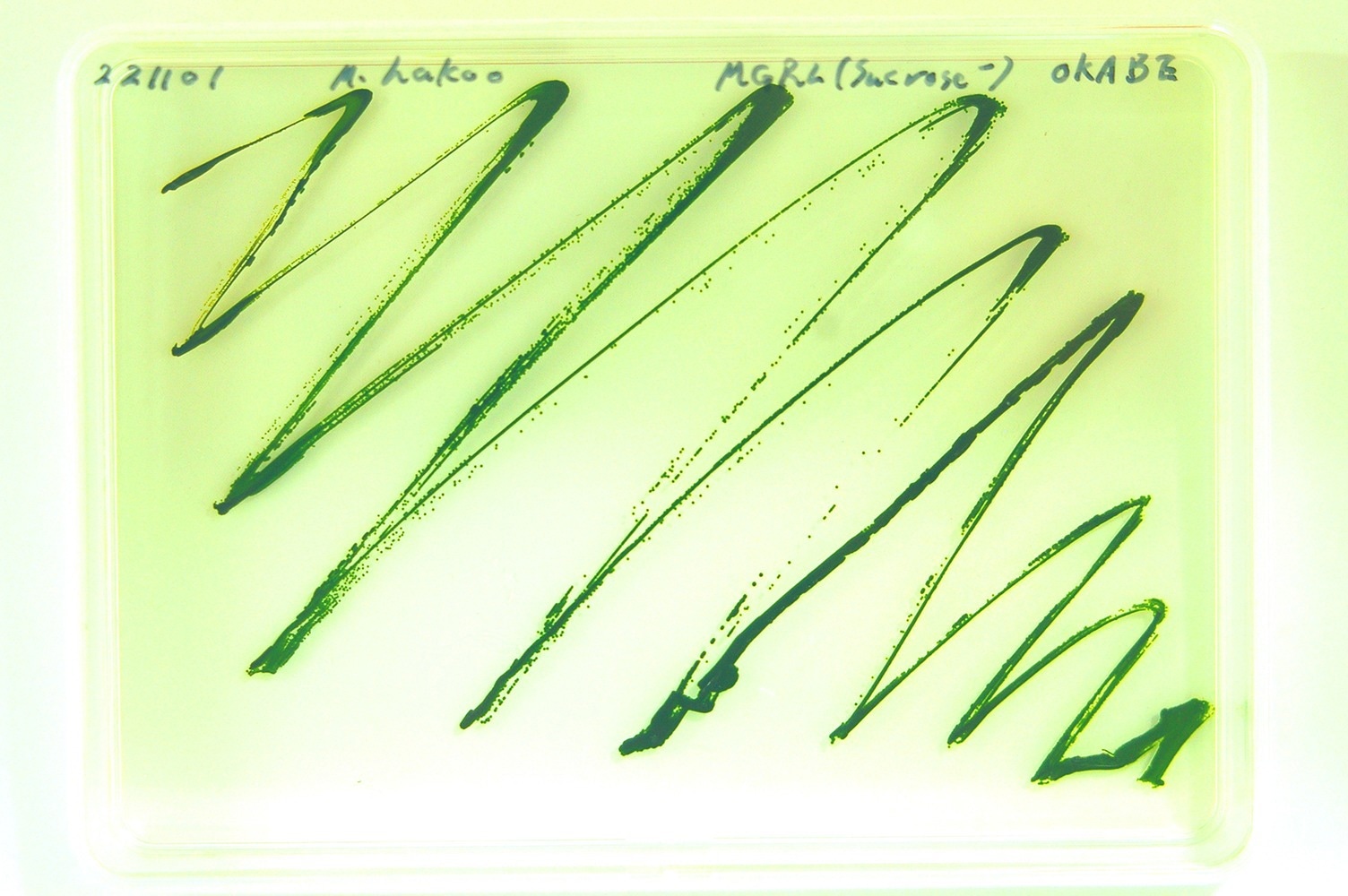A new species of microalgae was discovered in water from a home aquarium. Scientists from the University of Tokyo noticed Medakamo hakoo while examining DNA samples taken from algae. Its DNA sequence did not match any previously known species.
 Medakamo hakoo growing on an agar plate. Green lines with dots show a pure culture of Medakamo hakoo streaked onto an agar medium. Study co-author Emeritus Professor Tsuneyoshi Kuroiwa first discovered the algae when the water in his home goldfish tank turned green after he added medaka fish (Japanese rice fish), and he decided to look at samples under his home microscope. However, where the algae originated from—the water, fish, or somewhere else—is still unknown. Image Credit: © 2023 Sachihiro Matsunaga
Medakamo hakoo growing on an agar plate. Green lines with dots show a pure culture of Medakamo hakoo streaked onto an agar medium. Study co-author Emeritus Professor Tsuneyoshi Kuroiwa first discovered the algae when the water in his home goldfish tank turned green after he added medaka fish (Japanese rice fish), and he decided to look at samples under his home microscope. However, where the algae originated from—the water, fish, or somewhere else—is still unknown. Image Credit: © 2023 Sachihiro Matsunaga
This novel species is the smallest documented freshwater green algae, with inherent properties that allow it to be cultivated stably at high density, implying that it could be effectively employed to produce beneficial goods for food and industry.
Most people would have picked up seaweed on the beach, swam through fronds in a stream, or scrubbed out a dirty, green fish tank. These diverse aquatic organisms, which come in a variety of shapes, colors, and sizes, thrive on water, light, and nutrients.
Microalgae are ultrasmall algae that are invisible to the naked eye but are an important part of the Earth’s ecosystem, serving as the foundation for all aquatic food chains. They have caught the interest of investigators and businesses due to their capability to capture carbon dioxide, use them as a biofuel, alternative protein source, and other benefits. There are thousands of different types of microalgae that continue to thrive in unexpected places.
We were very surprised to discover a new species of microalgae in just a regular home aquarium. Alga were taken from the water and cultured one by one. The DNA of the alga was fluorescently stained and microscopically observed to find the one with the least amount of DNA per cell. We then sequenced the DNA of that alga and compared it to the DNA of other algae. The results did not match the DNA of any previously reported algae, indicating that it was a new species, and we named it Medakamo hakoo (M. hakoo).”
Sachihiro Matsunaga, Professor, Graduate School of Frontier Sciences
Microalgae have a small number of genes, which makes them ideal for scientists trying to figure out what functions different genes perform and how they can be used. Many of the tens of thousands of known microalgae are uncharacterized. It is now known that this is not only a new species, but it also has the smallest known genome of any freshwater algae, among other beneficial characteristics.
M. hakoo contains only one mitochondrion (for producing energy) and one chloroplast (which contains chlorophyll and creates food through photosynthesis), whereas normal plant cells contain multiple mitochondria and chloroplasts. This indicates that it is a green alga with an extremely simple cell structure.”
Sachihiro Matsunaga, Professor, Graduate School of Frontier Sciences
Professor Matsunaga adds, “From our research, we have also speculated that it has an unprecedented DNA structure and a new gene regulatory system. Its cell cycle is also strongly synchronized with the day and night cycle, which is key to effective, stable bioproduction. Due to these inherent qualities and extremely small size, M. hakoo can be effectively cultured at high cell density, making it possible to mass produce substances such as highly functional foods, cosmetics, and bio-fuel at a low cost.”
The scientists intend to continue investigating M. hakoo’s potential applications, both in the lab and in the real world.
Aquatic green algae are the originating organisms of today’s land plants. Thanks to this research, we can better understand the minimum number of genes required for an organism to evolve and thrive in diverse environments, which we will continue to study. In the future, I would like to find ways to collaborate and create useful substances from the mass cultivation of M. hakoo.”
Sachihiro Matsunaga, Professor, Graduate School of Frontier Sciences
Source:
Journal reference:
Kato, S., et al. (2023) Genomic analysis of an ultrasmall freshwater green alga, Medakamo hakoo. Communications Biology. doi.org/10.1038/s42003-022-04367-9.